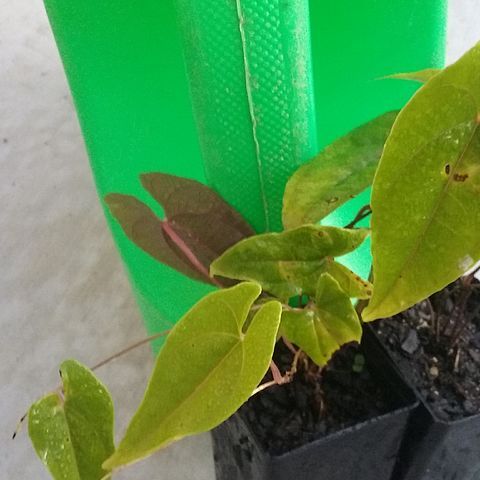A yam. A twining climbing plant. It has a large tuber underground from which it re-grows each year. The tuber can be 50 cm long and 5 cm wide. It has scattered hairs. The leaves are alternate and heart-shaped. There are small poorly developed lobes at the base of the leaf. The leaves are 5-10 cm long by 3-6 cm wide. The leaves have prominent veins. The male flowers occur in clusters in the axils of leaves and the female flowers are single in the clusters of leaves. The flowers are pale green and have a strong scent. The fruit is a 3 winged capsule. It is 2.5 cm wide and 1.5 cm long. They are light brown. The seeds are 3 and round. They are 1.5 cm across. It can have aerial bulbils.


